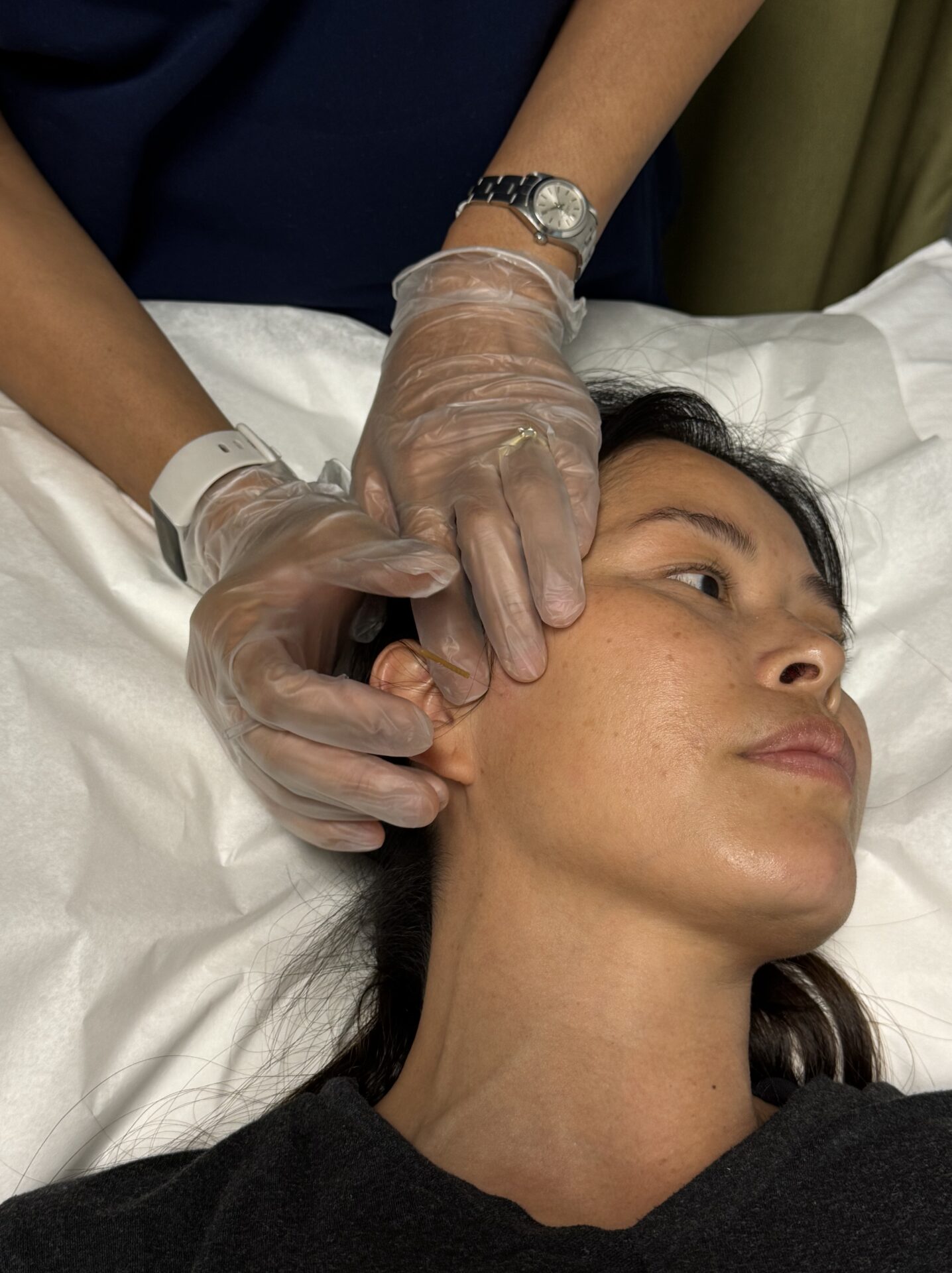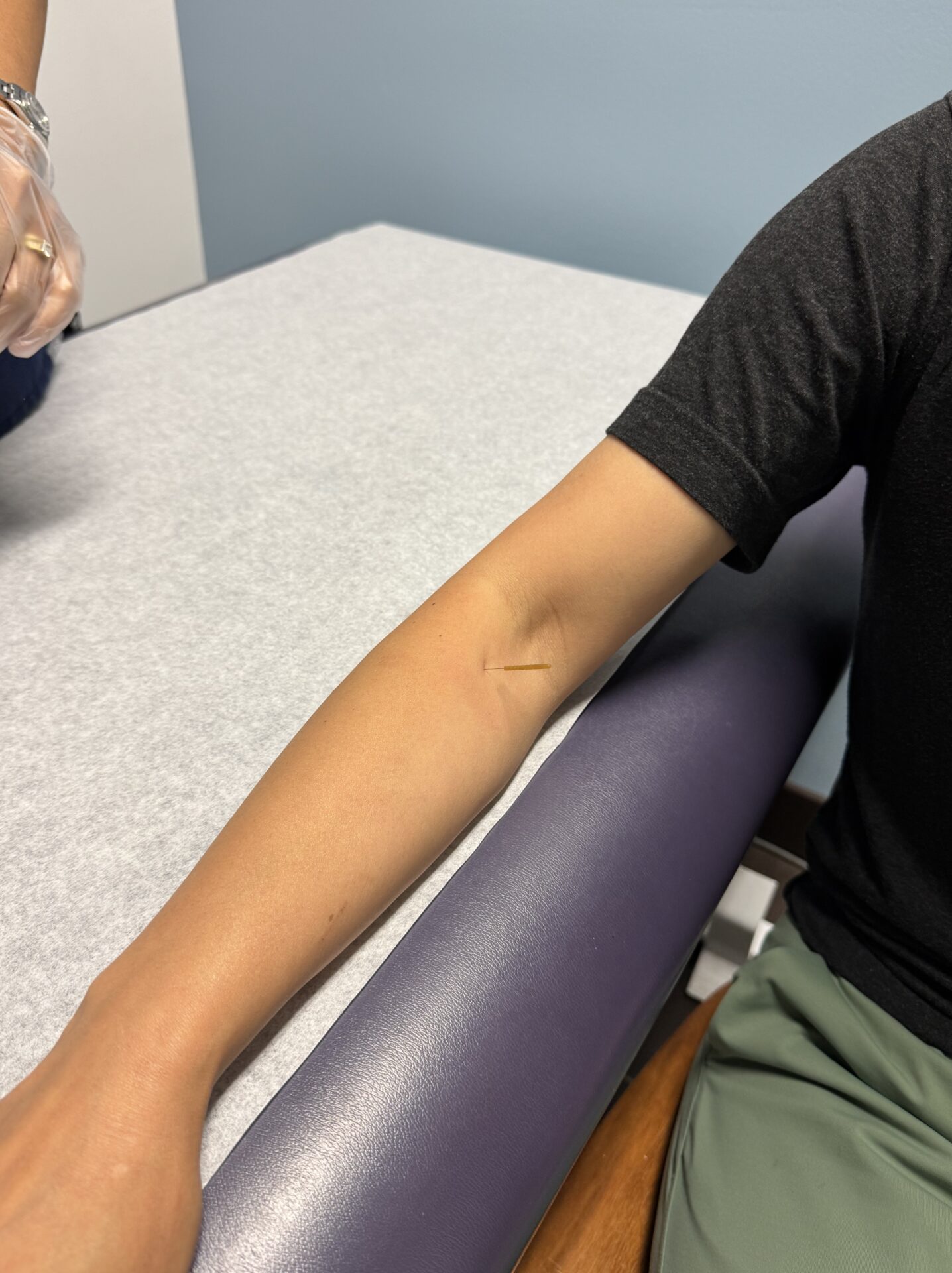What is Dry Needling or IMS and who should get it?

Sometimes you may try many different therapies but still feel your pain and tension lingers. Trigger points are highly sensitive spots within a tight band of muscle which are painful and tender to touch. They may develop over time due to chronic repetitive stresses and strains, or following traumatic injury. For patients with painful triggers points, dry needling or intramuscular stimulation (IMS) may be a worthwhile treatment option. Many physiotherapists in BC are trained to use dry needling or IMS as part of their physiotherapy repertoire.
Dry needling / IMS involves inserting thin acupuncture needles to treat shortened muscle bands. The technique is called “dry” needling because the needles are solid and nothing is injected; the needle alone releases the muscle knot. Needles may be placed on both spinal and limb muscles, depending on where tight and dysfunctional muscles are found on examination. The needle remains in the trigger point for a short time – from 10 seconds to several mintues, depending on the treatment goal.
Gunn Intramuscular Stimulation (GIMS) is a subset of IMS, following a specific IMS approach developed by Dr. Chan Gunn. GIMS uses dry needling to treat tight and sensitive spinal muscles which may be compressing and irritating a spinal nerve root. Needling is applied to the corresponding painful muscles in the limbs and trunk which are controlled by the same nerve segment. A link to the UBC website explaining the GIMS approach is found here.
The Difference From Acupuncture

Physiotherapists may also be trained to provide acupuncture, based on traditional Chinese medicine (TCM) principles. Acupuncture needles are placed based on specific acupuncture points and meridian pathways which guide energy flow. The needle clears blockages of energy (known as “qi” in Chinese) along the pathways in the body, restores balance and promotes healing. This holistic technique to treat muscle pain and tension usually involves more needles as compared to dry needling, and the needles remain in place for an extended time period, anywhere from 20 to 40 minutes.
At our clinic, the physiotherapists are trained to provide both dry needling / IMS and acupuncture as part of your treatment. You do not need to book a separate appointment as it is part of your physiotherapy session. Depending on the examination findings, your goals and your openness to needling, dry needling / IMS or acupuncture may be incorporated into your treatment plan. Book an appointment if you are interested in these techniques or are seeking guidance on how to deal with your chronic pain and tension.
